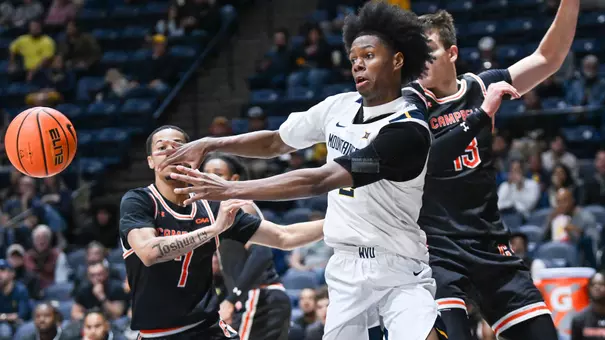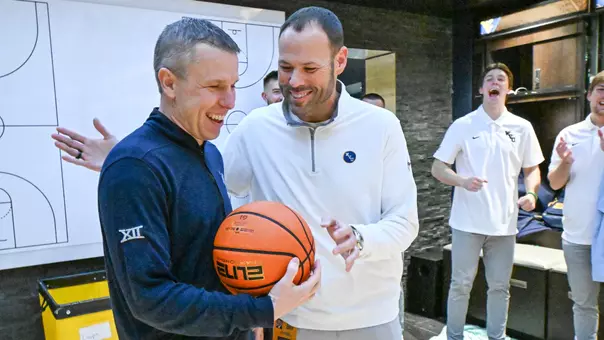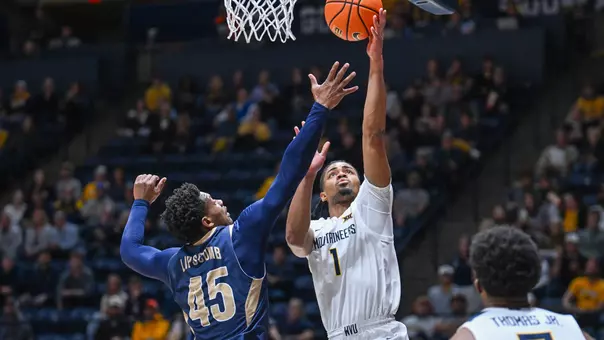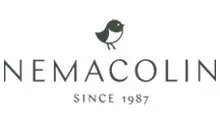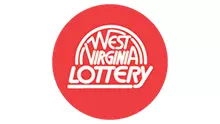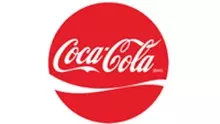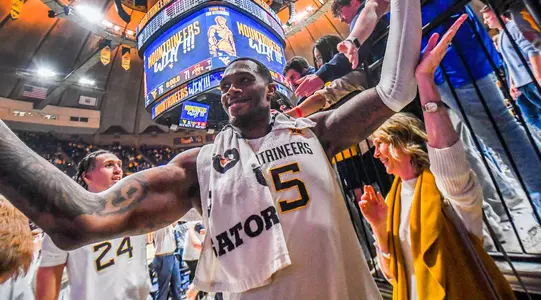
Photo by: All Pro Photography/Dale Sparks
WVU Coliseum Fan Support Impressive
February 22, 2023 01:49 PM | Men's Basketball, Blog
MORGANTOWN, W.Va. – Have you noticed the great fan support and atmosphere in the WVU Coliseum these days?
I sure have.
Earlier this week, nearly 12,000 were here on a Monday night to watch West Virginia defeat Oklahoma State 85-67 in a must-win game for the Mountaineers. That bears repeating … nearly 12,000 were here on a Monday night ….
That's just two days after West Virginia's disappointing 78-72 loss to Texas Tech when 13,940 were in attendance.
Four times the Mountaineers have topped 14,000 for Saturday games, including a season-high 14,141 for the Jan. 21 matchup against Texas.
West Virginia is averaging 11,872 for its 16 home dates with one game remaining against 12th-ranked Kansas State on Saturday, March 4. That contest has already been announced a sellout and if at least 14,047 show up, West Virginia will average 12,000 fans for just the fourth time in the 53-year history of the facility.
By the way, the prior three times have come during Hall of Fame coach Bob Huggins' tenure in 2010, 2018 and 2020.
Removing the COVID year in 2021 when attendance was restricted, West Virginia has averaged more than 10,000 fans each season since 2015 when Huggins first introduced college basketball to "Press Virginia."
 Quality opposition has certainly played a big factor in this phenomenon as well. Before West Virginia joined the Big East Conference during the 1995-96 season, the Coliseum experienced just 86 crowds of more than 10,000 fans over a 25-year period.
Quality opposition has certainly played a big factor in this phenomenon as well. Before West Virginia joined the Big East Conference during the 1995-96 season, the Coliseum experienced just 86 crowds of more than 10,000 fans over a 25-year period.
Since 2013, when West Virginia began play in the Big 12, now considered college basketball's No. 1 conference, the Coliseum has had 104 games with crowds of more than 10,000. We've already had 13 so far this year.
Prior to Gale Catlett's arrival in 1979, the Coliseum had 16 games with 10,000+ crowds and reached a low point during Joedy Gardner's final season in 1978 when the arena averaged 5,429 fans for its 12 home dates.
That figured was nearly approached again in 1994 when WVU averaged 5,804 fans during its next-to-last season playing in an Atlantic 10 Conference that featured just two appealing teams in Temple and Massachusetts.
When the Coliseum opened in 1971, it was touted as a cure-all for West Virginia's basketball woes playing an Eastern independent schedule while situated on a rural campus inaccessible by air travel with limited access to a modern highway system.
In 2010, the late Sonny Moran recalled the mounting issues his WVU program endured during the early 1970s, particularly regarding recruiting.
"Having been at the Field House all those years, we had great difficulty getting a lot of kids in there to see us play," he said. "(The Field House) was a godsend to us back in those days, though, because it was a tough place to play.
"When teams came in there, it was tough, and we had a tremendous home-court advantage, and then going to the Coliseum opened up a new can of worms," he said. "The combination of a change in schedule strength and the new Coliseum created quite a problem for us."
Moran added, "(The Coliseum was) a great recruiting benefit when we brought kids in, but then the type of kids we were going after were used to going into arenas like that anyway. It was good for recruiting kids coming out of small towns and that type of thing, but it wasn't going to be our cure-all."
Although attendance was estimated during the years West Virginia played in the Field House, the facility averaged approximately 6,000 fans per game during its final season in 1970 with sellouts against William & Mary, Richmond, St. John's, George Washington, Hawaii, Davidson, Syracuse and Pitt.
A year later, when West Virginia moved into the 14,000-seat Coliseum (more than twice the capacity of the Field House), the Mountaineers averaged just 7,153 fans for their 13 home dates.
Then, in 1982, the basketball program got a big boost when Catlett's team went on a 23-game winning streak to get into the nation's top 10 for the first time in nearly two decades. During a four-game February stretch, WVU drew 12,620 for St. Bonaventure, 13,491 for George Washington, 14,853 for Stetson and a record 16,704 for Pitt near the end of the month, a Coliseum standard that will never be broken.
"For many games during that period, we were allowed by the state fire marshal to sell standing room tickets along the concourse, and students were the X-factor for games because there was no ticket validation process back then," Craig Walker, then WVU's assistant athletic director for finance and administration, once recalled.
Walker indicated that there were probably more than 17,000 fans in the arena for that game.
"I can tell you this, it was a thousand more than what we announced because I dropped it exactly 1,000," he said. "That wouldn't happen again because you would simply cut off (student ticket) validation."
In the early 1990s, fan interest waned when Catlett's teams were not able to sustain the great success they enjoyed in the 1980s. After averaging more than 10,000 fans in 1982 and 1983, it took West Virginia another 23 years to reach that level of fan support during John Beilein's fourth season in 2006.
Through the years, even when the Coliseum wasn't always full, it continued to have a great reputation for being one of the toughest arenas in college basketball. Inside Sports magazine ranked the Coliseum the eighth-toughest venue in 1992, more so for its inaccessibility, poor lighting and inadequate fan amenities than for its overall hostility.
"I don't know what it is about that place," Maryland coach Gary Williams said. "It's not a loud crowd nor a particularly hostile one, but sometimes there are just places out there where it's hard to get comfortable. There's that guy with the rifle, shooting indoors – that's really strange. It's just a funny atmosphere. In a lot of ways, it's the reverse of Cameron (Indoor Stadium); it disturbs you because it's half-filled. We never got rolling. You get the sensation of rattling around in there."
The success Beilein's and Huggins's teams have since enjoyed, combined with the recent improvements to the concourse, video board, lighting and fan experience, not to mention Morgantown's overall growth and development, have turned the WVU Coliseum into what Red Brown hoped it would be when he convinced the State Legislature to invest $10.4 million to build the facility in 1967.
As recently as 2016, ESPN's Myron Metcalf rated the Coliseum the second-most difficult venue in the Big 12 behind only Kansas's Allen Fieldhouse.
"So, you're on your way to the West Virginia Coliseum for a basketball game," he wrote. "You're not looking forward to the 'Press Virginia' attack that forced turnovers on 25% of its opponents' possessions in 2015-16. But that's not the first concern.
"First, you have to get to Morgantown. Your team charter can't squeeze into the Morgantown airport, so you're probably going to fly into Pittsburgh or even Bridgeport, West Virginia, and drive to campus. Now you're in Morgantown, but you can't even get into the arena because your bus is stuck in a snowstorm. So you arrive late. But the 10,000-plus fans at the WVU Coliseum are waiting for you. And their mascot is a real dude with a gun and a Davy Crockett fur cap. You don't want to go to WVU Coliseum. You just want to get out of there."
Unless, of course, you are a rabid West Virginia basketball fan.
I've been watching games in the Coliseum since the late 1970s, and the overall fan experience in here is at an all-time high. For you old-timers, playing these grueling Big 12 games is like having Notre Dame, Louisville, Pitt, UNLV, Temple and UMass in Morgantown on a nightly basis.
The games are that good and that compelling, and Mountaineer basketball fans are clearly responding.
I sure have.
Earlier this week, nearly 12,000 were here on a Monday night to watch West Virginia defeat Oklahoma State 85-67 in a must-win game for the Mountaineers. That bears repeating … nearly 12,000 were here on a Monday night ….
That's just two days after West Virginia's disappointing 78-72 loss to Texas Tech when 13,940 were in attendance.
Four times the Mountaineers have topped 14,000 for Saturday games, including a season-high 14,141 for the Jan. 21 matchup against Texas.
West Virginia is averaging 11,872 for its 16 home dates with one game remaining against 12th-ranked Kansas State on Saturday, March 4. That contest has already been announced a sellout and if at least 14,047 show up, West Virginia will average 12,000 fans for just the fourth time in the 53-year history of the facility.
By the way, the prior three times have come during Hall of Fame coach Bob Huggins' tenure in 2010, 2018 and 2020.
Removing the COVID year in 2021 when attendance was restricted, West Virginia has averaged more than 10,000 fans each season since 2015 when Huggins first introduced college basketball to "Press Virginia."
 Quality opposition has certainly played a big factor in this phenomenon as well. Before West Virginia joined the Big East Conference during the 1995-96 season, the Coliseum experienced just 86 crowds of more than 10,000 fans over a 25-year period.
Quality opposition has certainly played a big factor in this phenomenon as well. Before West Virginia joined the Big East Conference during the 1995-96 season, the Coliseum experienced just 86 crowds of more than 10,000 fans over a 25-year period.Since 2013, when West Virginia began play in the Big 12, now considered college basketball's No. 1 conference, the Coliseum has had 104 games with crowds of more than 10,000. We've already had 13 so far this year.
Prior to Gale Catlett's arrival in 1979, the Coliseum had 16 games with 10,000+ crowds and reached a low point during Joedy Gardner's final season in 1978 when the arena averaged 5,429 fans for its 12 home dates.
That figured was nearly approached again in 1994 when WVU averaged 5,804 fans during its next-to-last season playing in an Atlantic 10 Conference that featured just two appealing teams in Temple and Massachusetts.
When the Coliseum opened in 1971, it was touted as a cure-all for West Virginia's basketball woes playing an Eastern independent schedule while situated on a rural campus inaccessible by air travel with limited access to a modern highway system.
In 2010, the late Sonny Moran recalled the mounting issues his WVU program endured during the early 1970s, particularly regarding recruiting.
"Having been at the Field House all those years, we had great difficulty getting a lot of kids in there to see us play," he said. "(The Field House) was a godsend to us back in those days, though, because it was a tough place to play.
"When teams came in there, it was tough, and we had a tremendous home-court advantage, and then going to the Coliseum opened up a new can of worms," he said. "The combination of a change in schedule strength and the new Coliseum created quite a problem for us."
Moran added, "(The Coliseum was) a great recruiting benefit when we brought kids in, but then the type of kids we were going after were used to going into arenas like that anyway. It was good for recruiting kids coming out of small towns and that type of thing, but it wasn't going to be our cure-all."
Although attendance was estimated during the years West Virginia played in the Field House, the facility averaged approximately 6,000 fans per game during its final season in 1970 with sellouts against William & Mary, Richmond, St. John's, George Washington, Hawaii, Davidson, Syracuse and Pitt.
A year later, when West Virginia moved into the 14,000-seat Coliseum (more than twice the capacity of the Field House), the Mountaineers averaged just 7,153 fans for their 13 home dates.
Then, in 1982, the basketball program got a big boost when Catlett's team went on a 23-game winning streak to get into the nation's top 10 for the first time in nearly two decades. During a four-game February stretch, WVU drew 12,620 for St. Bonaventure, 13,491 for George Washington, 14,853 for Stetson and a record 16,704 for Pitt near the end of the month, a Coliseum standard that will never be broken.
"For many games during that period, we were allowed by the state fire marshal to sell standing room tickets along the concourse, and students were the X-factor for games because there was no ticket validation process back then," Craig Walker, then WVU's assistant athletic director for finance and administration, once recalled.
Walker indicated that there were probably more than 17,000 fans in the arena for that game.
"I can tell you this, it was a thousand more than what we announced because I dropped it exactly 1,000," he said. "That wouldn't happen again because you would simply cut off (student ticket) validation."
In the early 1990s, fan interest waned when Catlett's teams were not able to sustain the great success they enjoyed in the 1980s. After averaging more than 10,000 fans in 1982 and 1983, it took West Virginia another 23 years to reach that level of fan support during John Beilein's fourth season in 2006.
Through the years, even when the Coliseum wasn't always full, it continued to have a great reputation for being one of the toughest arenas in college basketball. Inside Sports magazine ranked the Coliseum the eighth-toughest venue in 1992, more so for its inaccessibility, poor lighting and inadequate fan amenities than for its overall hostility.
"I don't know what it is about that place," Maryland coach Gary Williams said. "It's not a loud crowd nor a particularly hostile one, but sometimes there are just places out there where it's hard to get comfortable. There's that guy with the rifle, shooting indoors – that's really strange. It's just a funny atmosphere. In a lot of ways, it's the reverse of Cameron (Indoor Stadium); it disturbs you because it's half-filled. We never got rolling. You get the sensation of rattling around in there."
The success Beilein's and Huggins's teams have since enjoyed, combined with the recent improvements to the concourse, video board, lighting and fan experience, not to mention Morgantown's overall growth and development, have turned the WVU Coliseum into what Red Brown hoped it would be when he convinced the State Legislature to invest $10.4 million to build the facility in 1967.
As recently as 2016, ESPN's Myron Metcalf rated the Coliseum the second-most difficult venue in the Big 12 behind only Kansas's Allen Fieldhouse.
"So, you're on your way to the West Virginia Coliseum for a basketball game," he wrote. "You're not looking forward to the 'Press Virginia' attack that forced turnovers on 25% of its opponents' possessions in 2015-16. But that's not the first concern.
"First, you have to get to Morgantown. Your team charter can't squeeze into the Morgantown airport, so you're probably going to fly into Pittsburgh or even Bridgeport, West Virginia, and drive to campus. Now you're in Morgantown, but you can't even get into the arena because your bus is stuck in a snowstorm. So you arrive late. But the 10,000-plus fans at the WVU Coliseum are waiting for you. And their mascot is a real dude with a gun and a Davy Crockett fur cap. You don't want to go to WVU Coliseum. You just want to get out of there."
Unless, of course, you are a rabid West Virginia basketball fan.
I've been watching games in the Coliseum since the late 1970s, and the overall fan experience in here is at an all-time high. For you old-timers, playing these grueling Big 12 games is like having Notre Dame, Louisville, Pitt, UNLV, Temple and UMass in Morgantown on a nightly basis.
The games are that good and that compelling, and Mountaineer basketball fans are clearly responding.
Mark Kellogg | Kent State
Saturday, November 08
Sydney Shaw and Jordan Harrison | Kent State
Saturday, November 08
2006 Sugar Bowl Team Reunion
Saturday, November 08
TV Highlights: WVU 73, Campbell 65
Friday, November 07

